Table of Contents
Among the many arts and crafts in India, few, if any, are as radiant as Multani Blue Pottery. This beautiful art form has been around for many centuries, and is a part of the Indian cultural heritage; it is no wonder that admirers and collectors of this art form are passionate about it all around the world. Multani Blue Pottery is comprised of stunning cobalt blue colors and intricate designs that allow artists to demonstrate their craft. Truly, Multani Blue Pottery is a culture, a history, an art, and at the end of the day, a craft. Let’s see if we can learn the mystery behind this art form.
The Origins of Multani Blue Pottery
The tale of Multani Blue Pottery begins in the old city of Multan currently known for being the “City of Saints” in Pakistan today. Multan, in its time, was a vibrant trade locality with a rich fusion of culture from the Persian influence, Central Asia, and India. Persian Master Craftsmen are generally believed to have advanced the technique of blue pottery in Multan in the early 13th century, which later evolved into its distinct regional style through the efforts of dedicated master craftsmen working within a parallel motif.
Blue pottery is called “blue pottery” because of its distinctive cobalt oxide, which provides the pot with its trademark deep-blue color. This pigment is put on an unfired clay body, and the result is a shiny finish after adding glaze. Multani Blue Pottery is also different from pottery in that it is not made of clay from the Earth. The term “Blue Pottery” itself refers to the natural materials that are mixed with powdered glass, quartz powder, and other things, so the pottery is both light and strong.
The Unique Techniques Behind Multani Blue Pottery
Unique to Multani Blue Pottery is that it takes a lot of effort to complete each product. Each product is a slow and skillful endeavor. Here is a brief overview of the steps involved in making these products:
Overview of the process:
1. Material Preparation:
The base material is prepared by crushing quartz stone into a fine powder. This powder is mixed with recycled glass, gum, and water until dough consistency is formed. Unlike conventional pottery, clay is not used in this process, which is why the finish resembles porcelain.
2. Forming the Object:
The dough is formed either by hand or on the potter’s wheel. After the form is made, the object is left in the sun to dry for several days until hard.
3. Designing and Painting:
Careful artisans apply patterns to the dried object by hand painting with natural pigments. Cobalt oxide provides the blue color. The other natural oxides are used sparingly to add accents of green, yellow, or brown.
4. Glazing and Firing:
After painting, the piece is covered in a thin layer of transparent glaze made from powdered glass. The piece is fired at high temperature in a kiln, which melts the colors and glaze together to make a glossy and colourful finish.
The result? Beautiful pieces of art that are wonderfully functional and beautiful—such is the hallmark of Multani Blue Pottery.
Themes and Motifs in Multani Blue Pottery
The diversity of motifs in Multani Blue Pottery is one of the most fascinating characteristics of this style of pottery. The designs have their origin in nature, Islamic art, and Mughal architecture. The motifs are derived from four major themes:
Floral patterns: delicately painted representations of flowers, such as the lotus, marigold, and rose. The floral patterns symbolize beauty and good fortune.
Geometric designs: The use of geometric patterns, as well as the inherent use of symmetry and precision in every design, is a clear nod to Islamic art.
Animal Figures: representations of birds, such as peacock and parrot motifs; these birds symbolize elegance and freedom.
Calligraphy: The addition of Arabic lettering and verses from the Quran to the designs adds a different aspect to the design altogether, given that some pieces include calligraphy throughout.
Motifs facilitate stories that connect the viewer to the culture and history of the region.
The Cultural Significance of Multani Blue Pottery
In addition to its aesthetic value, Multani Blue Pottery is greatly valued culturally. It has been loved for centuries and exemplifies hospitality and sophistication, as it was once used to serve food and drinks at special occasions, such as weddings and festivals. Today, it illustrates both food and an artistic object for homes and museums around the world.
In addition to its cultural significance, the craft is significant for the livelihoods of artisans in Multan. Even after commercialization and mass production of pots, many families have maintained their craft and gone as far as teaching their children how to pot. Even the government and intermediary organizations have involved themselves in the promotion of Multani Blue Pottery as a means of helping to resuscitate the endangered artistic tradition in Pakistan.
Why Multani Blue Pottery Is Trending Today
Handmade, sustainable crafts continue to enjoy a renaissance in popularity lately, and Multani Blue Pottery is no exception. Here are a few reasons for this art being in demand globally:
- Environmental Fad: It uses natural materials and has no harmful chemicals, making it marketable for the increasing demand for environmentally friendly products.
2. One-of-a-Kind Style: The classic elegance of Multani blue pottery has found a fan base among interior designers and homeowners looking for sophisticated products.
3. Cultural provenance: As people increasingly seek authentic craftsmanship in designed products rather than in mass-produced counterparts, Multani blue pottery is based on actual South Asian culture.
4. Multi-Purpose: From vases and bowls to tile and wall hangings, the diverse aspects of this craft lend support to the environmental situation and the situation of culture by providing potential uses for brand new spaces-be it contemporary or traditional.
Preserving the Legacy of Multani Blue Pottery
Despite the beauty of Multani Blue Pottery, the art form is at risk in today’s world. The increasing prices of raw materials, reduced support, and competition from machine-made alternatives are jeopardizing this craft. But there are some positive developments on the horizon to support the artisans through fair trade, to support the artisans through digital marketing, and to support the artisans through international exhibitions.
When you buy authentic , you are not only buying a piece of history, but you are also supporting the artisans who dedicate their lives to preserving an extraordinary art form. Your purchase supports the craftsmen who are keeping this tradition alive!
Conclusion
Despite the beauty of Multani Blue Pottery, the art form is at risk in today’s world. The increasing prices of raw materials, reduced support, and competition from machine-made alternatives are jeopardizing this craft. But there are some positive developments on the horizon to support the artisans through fair trade, to support the artisans through digital marketing, and to support the artisans through international exhibitions.
When you buy authentic Multani Blue Pottery, you are not only buying a piece of history, but you are also supporting the artisans who dedicate their lives to preserving an extraordinary art form. Your purchase supports the craftsmen who are keeping this tradition alive!
2 responses to “Multani Blue Pottery: A Beautiful Journey Through 5 Centuries of Craft, Culture, and Color”
-
[…] Multani Blue Pottery is one of the few crafts that can carry you from a legacy of tradition, craftsmanship, and elegance, to enlivening your home decor. This decorative, kiln-fired, earthenware ceramic art form, indigenous to the city of Multan, Pakistan, can be considered a craft that is several hundred years old, that has landed in the middle of a vibrant second life in India, specifically places like Jaipur, where Massive production centers are designed, and being tended to by skilled artisans who are now adding exquisite designs and techniques to its tradition and symbolism.While Multani Blue Pottery is a style of decorative ceramic, it is more than just a style; it a statement! With its eye-popping cobalt blue colors, intricate flowers, and unique white background, this pottery form attempts to add a royal touch and embrace rich cultural heritage to any living space. Unlike traditional ceramics, Multani Blue Pottery is lead-free, glazeless, and made from a specific composition of quartz stone, glass, and clay, although it would be correct to say clay is its soul, leaving you with a translucent, porcelain-like appearance. […]
-
[…] we begin 2025, Multani Blue Pottery is more than just color; it will embody heritage, authenticity and beauty in all its forms. It marks […]

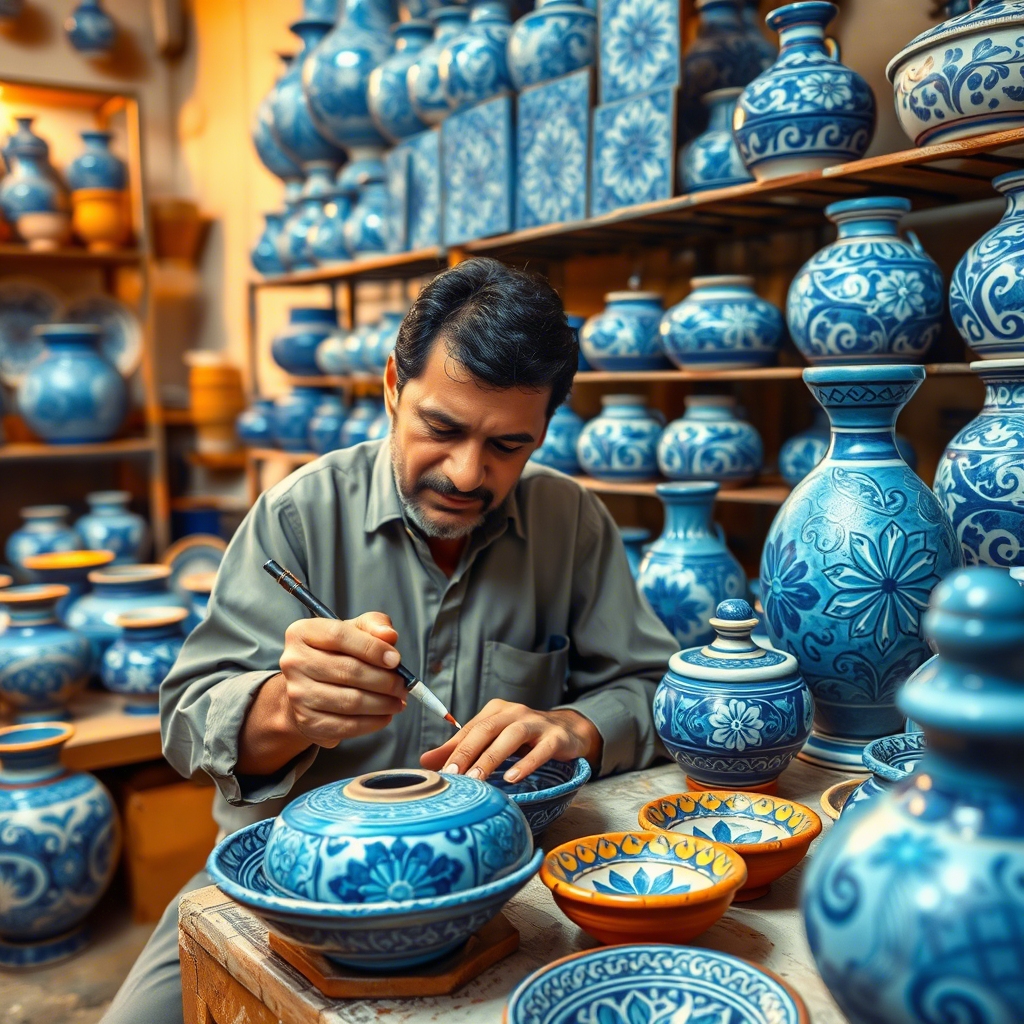
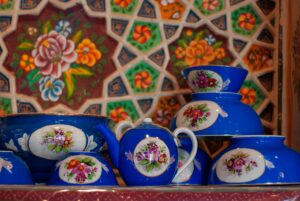
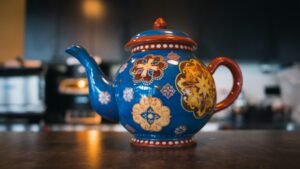
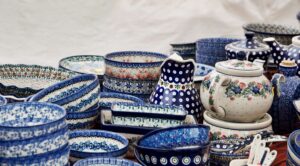
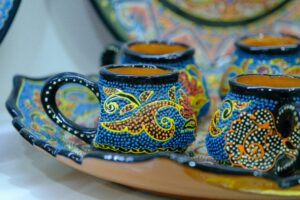
Leave a Reply